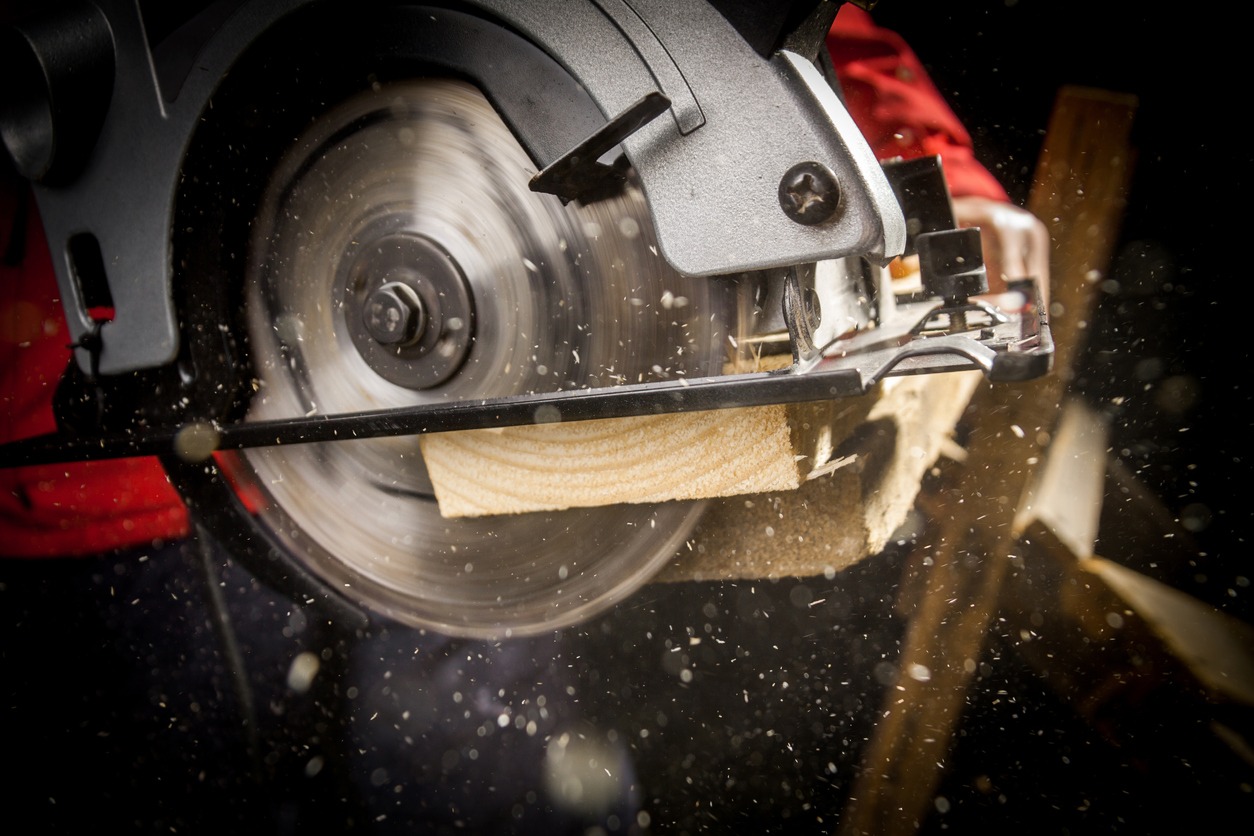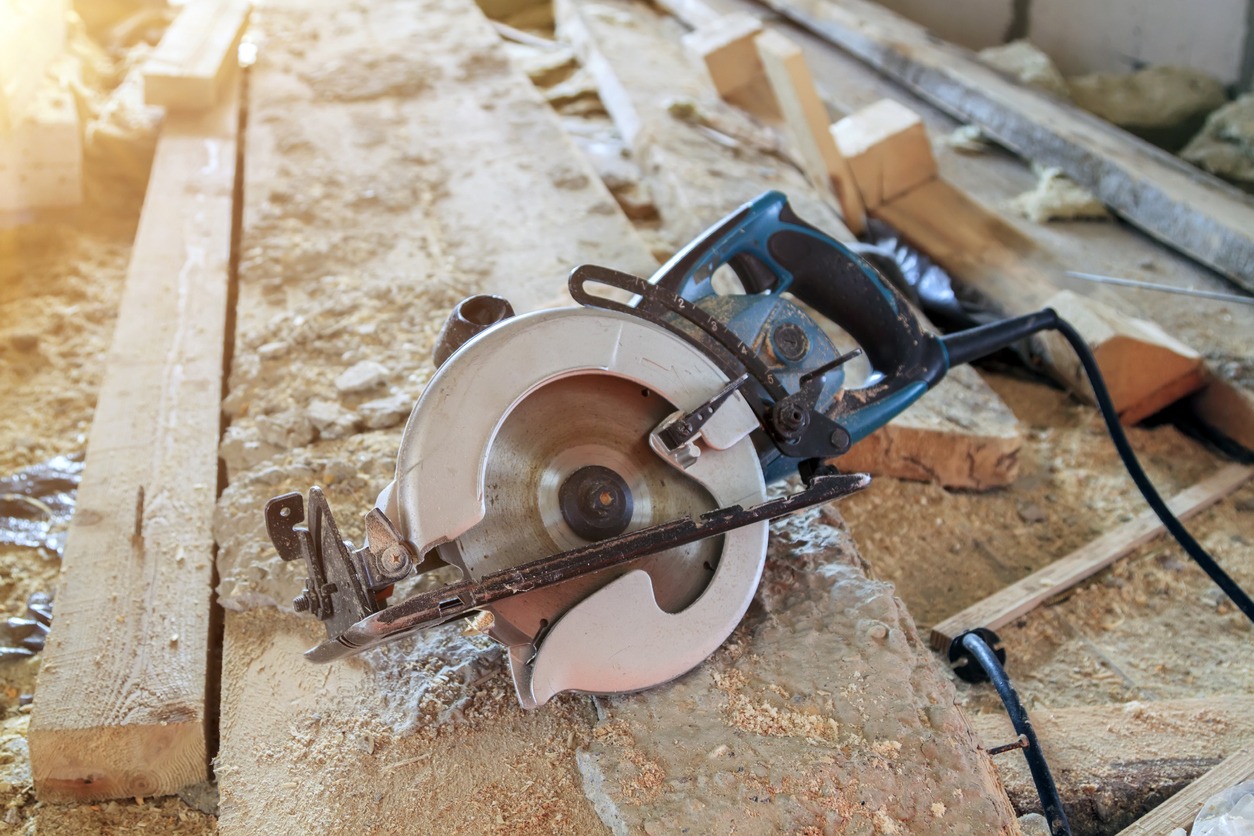A circular saw is a must-have in any professional woodworker or DIYer’s home workshop. This power tool is a special type of saw featuring an abrasive disc or a circular toothed blade to cut various materials. The blade runs at a very high speed to cut wood, metal, masonry or plastic.
The circular saw has a handle that protects the user from touching the blade while it is spinning. It also features bevel, height and depth adjustments with the arbor nut securing the blade in place.
What is a Circular Saw?
It is a high-powered saw that usually works with electricity, but some models can also be powered by a petrol engine or a hydraulic motor. Aside from hand-held units, you can also find models that can mount on a worktable. With its rigid blade, this power saw creates straight, square cuts. While a jig saw also delivers the same cut, the large serrated edges of the circular blade make cutting materials less time-consuming.
You can find circular saws available in different sizes. The most popular model is the one which has a blade measuring 7.5 inches in diameter. This type of circular saw is ideal for smaller projects such as cutting plywood or planks. Other circular saws with blades measuring 12 inches in diameter (and up) are suitable for cutting timber to make posts and beams. You can also adjust the blades to make angled (bevel) cuts up to 45 degrees. Circular saws typically operate on eight to 15 ampere motors.
Types of Circular Saw
There are three main types of circular saws — sidewinder circular saw, worm drive circular saw, and hypoid circular saw. Let’s look at how they are different from one another.
Sidewinder Circular Saw
Also called in-liner circular saw, the sidewinder is the most common and popular circular saw. It is called so because the motor of this saw mounts on its side, typically the right side. The motor rests in line with the blade, creating more speed.
These circular saws are very compact and portable. They are lighter than other circular saws, and more stable too because the motor rests solidly on the workpiece, which makes it ideal for overhead sawing.
Sidewinder circular saws are available in both corded and cordless models. Being lighter, they are also easy to use. Because the motor and blade are mounted alongside each other, you may have some difficulty seeing and following where you’re cutting. They are quite inexpensive for the most part and are a good option for most woodworking enthusiasts.
Worm Drive Circular Saw
A worm drive circular saw differs from the sidewinder model in its motor placement. In this circular saw, the motor is mounted towards the back of the power tool. The blade receives power from two gears placed at 90° from each other. It is significantly longer and narrower, and weighs more. Plus, the gear configuration also slows its speed of rotation. You will also need to lubricate the gears regularly so they operate smoothly.
Since it gives you a clear view of what you are cutting, a worm drive circular is great for cutting wide boards and sheets. It is also suitable for plunge cutting. Worm drive saws are the king of power and production. No professional woodworking workshop is complete without one of these.
Hypoid Circular Saw
Often miscategorized as worm drive saws, the hypoids are a specific type of circular saw. Like worm drive models, hypoid saws also have motors behind the blade, but their transmission box are different.
These saws employ a hypoid gear, a type of spiral bevel gear whose axis is not in-line with the axis of a meshing gear. This gear configuration improves blade contact to boost its power and efficiency without increasing the size and noise output of the machine. Unlike worm drive models, these circular saws don’t require frequent lubrication because their motor system is sealed. They are heavier than sidewinders, and offer good sighting of the cut line.
Important Aspects To Consider When Buying a Circular Saw
You are getting ready to start on your new DIY project. It requires you to have a circular saw. You already read about its different types, so which one should you get? The number of options available on the market can easily confuse you. Here are some important factors to consider, which can help you pick the right circular saw according to your needs.
Power Source
Circular saws are available as both plug-in and battery-operated models. The corded circular saws were considered superior to cordless ones in terms of sustained, heavy-duty cutting. Recent innovations in the battery technology have lowered the performance gap between these.
As a DIYer, you are better off purchasing a corded model for its more sustained power. If your budget allows, be sure to get a cordless model too so you continue to work even when there is no electrical outlet nearby.
Power Rating
The power rating of corded circular saws is typically expressed in amperage. The higher the ampere rating, the better the cutting power of the saw. The standard for circular saws, these days, is set at 15 ampere. You’ll also find 10 or 12 ampere saws, they are recommended for occasional use. Of course, there is a difference in price, but you shouldn’t let it influence your choice of something you can expect to use for many years.
Cordless circular saws, on the other hand, are rated by the voltage of their batteries. The modern battery-powered circular saws all rely on lithium ion systems for power. The standard voltage for these saws is 18 volts, though you can also find more powerful 28 volt options.
Along with the voltage rating, you should also look at the ampere-hour reading to determine how long the saw will operate before the battery dies. This rating can range from five hours to nine hours.
Blade Diameter
The next thing you should consider when buying a circular saw is the diameter of the blade it can take. The most suitable size for DIYers and woodworking enthusiasts is 7.5 inches. A circular blade this size will cut through materials that are up to three inches thick. Plus, you’ll find the widest range of blade choices in this size.
Smaller blade sizes start at 4.5 inches in diameter, while the larger ones can go up to 12 inches or more.
Blade Material
Most circular saws come equipped with a carbide-tipped all-purpose wood-cutting blade. Any option that comes with a stainless steel blade is not worth the money because you’ll soon be replacing it with a more expensive carbide-tipped blade. This is because the carbide-tipped blades are very durable and they can easily cut through various materials. You can also buy specialty blades if you want to work with materials such as wood, concrete, metal, or tiles. Switching blades in a circular saw is easy and takes only a few minutes.
Ergonomics
Circular saws may all appear similar from a distance. The differences become quite clear once you hold them to use. When you are buying a circular saw, be sure to pick up and test the available options. Make sure the one you choose fits and feels balanced in your hand. A good grip and balance can make all the difference in how comfortably and efficiently you work with it.
Conclusion
A circular saw is a must-have in any DIYer and enthusiastic woodworker’s home workshop. This power tool can create straight cuts in materials both thick and thin. You can find circular saw blades in various sizes and materials to tackle various sawing jobs. There is a choice of corded and cordless models too. When buying a circular saw, always prioritize your comfort. The easier it is to hold the tool, the more accurate and high-quality your end result will be.


